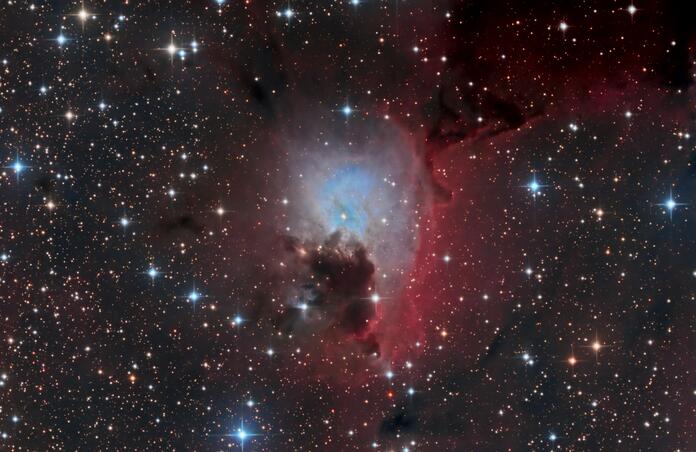Bit Depth (Briefly) Explained

Every individual pixel or photo site on a CCD or CMOS camera chip is able to capture and store photons of light up to the point each pixel or photo site becomes full of charge and not able to accept any more photons. The maximum capacity of a pixel to store photons is called the Full Well Capacity.
The Analog to Digital Converter (ADC) reads the pixel value of photons as a voltage and maps this voltage to a digital value in a predetermined range of values called the Bit Depth. Depending on the defined Bit Depth of your detector, you will be able to define a range of possible grayscale values that can be assigned a digital value by the ADC.
A camera that has an 8 bit depth, has 2^(8) range of values or 256 discrete values.
A camera that has a 12 bit depth, has 2^(12) range of values or 4096 discrete values.
A camera that has a 14 bit depth, has 2^(14) range of values or 16,383 discrete values.
A camera that has a 16 bit depth, has 2^(16) range of values or 65,536 discrete values.
The QHY 600M camera used by Telescope Live has a bit depth of 16 bits. With this capability, the ADC for this camera can distinguish very small voltage differences and provide a more accurate assessment of the brightness of each pixel on the chip detector.
Why is this important? 16 Bit Depth determines the number of possible shades of from black (value = 0) to white (value = 65,535). With this range of values from the ADC, you can expand the dynamic range of an image by mapping the data to a wider range of values. Deep sky objects are very faint and imaging them will involve a very narrow range of brightness levels at the darker end of the histogram. If you recorded the image data on an 8 Bit Depth camera, light from the faint object may only register in the 15 to 20 darkest discrete levels of the 256 discrete levels available. 15 to 20 shades will probably not be enough to distinguish much of a difference in the brightness level of a faint object and register any fine detail. However, with a 16 Bit Depth camera, the same 15 to 20 shades in the 8 bit camera data will be now divided into 3,840 discrete levels out of the 65,536 discrete levels that are available, allowing more discrete data on the fine details of the target mapped to a larger range of discrete levels of the shades of gray between black (value = 0) and white (value = 65,535).
Clear skies...
Astro Image Credits:
NGC 2626 (https://app.telescope.live/click-grab/all?target=ngc%202626); Telescope Live 1-Click Observation Data, Processed using PixInsight by Reggie Jones
